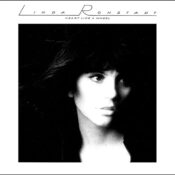Almost everyone agrees that television has too many commercials, and almost everyone can name a commercial that they’ve seen too many times. One such set of ads belongs to the seemingly endless Now That’s What I Call Music compilation series. The U.K.-created collection of hit pop tunes has been dropping installments for an improbable 40 years. Here’s a look at the numbers behind the Now.
1983: Now That’s What I Call Music originated in the U.K. office of Virgin Records, the label launched by Simon Draper, Nik Powell, Tom Newman, and billionaire Richard Branson in 1972. The compilation came together through a series of conversations with Jon Webster (then general manager), Stephen Navin (then head of licensing and business affairs), Draper (managing director), and Peter Jamieson (then managing director of EMI Records).
1920s: The name of the series came from an advertising poster for . . . bacon? Branson had originally purchased the 1920s poster (which featured a pig saying “Now, that’s what I call music” to a singing chicken) as a joke to hang on the wall behind Draper’s desk; apparently the managing director was famously grumpy if he hadn’t had his breakfast. The pig would become a recurring mascot for the music series, appearing sporadically in cover art as recently as 2021.
“(Keep Feeling) Fascination” music video (Uploaded to YouTube by The Human League)
30 Tracks: The first volume of Now included 30 hit songs from both sides of the Atlantic. Some of the ’80s staples included were “Total Eclipse of the Heart” (Bonnie Tyler), “The Safety Dance” (Men Without Hats), “Down Under” (Men at Work), “Karma Chameleon” (Culture Club), “Is There Something I Should Know” (Duran Duran), “Candy Girl” (New Edition), and “(Keep Feeling) Fascination” (The Human League). The album went platinum in the U.K. three times, owing to the diversity and density of the song selection. Like any piece of media, success guaranteed a sequel.
116?!: The U.K. Now series has produced 116 volumes in the main line, with the most recent arriving just days ago (November 17, 2023). The original series has also created several sub-lines, like Dance, Country, and Christmas. The Special Edition series includes volumes like Smash Hits, Disney, Eurovision, and more. After the U.K. series had been rolling for a few years, it began to branch out into other countries, including both local artists and imported international hits; over 30 countries and geographic regions (for example, Southeast Asia) have their own series.
1998: The Now series finally arrived in America in 1998. That was a particularly interesting time for popular music in the States, as it was something of a bridge time between musical movements. The alternative explosion of the early 1990s was in decline and Nu Metal was ascending. There was turnover in hip-hop following the recent deaths of superstars Tupac Shakur and Notorious B.I.G. The curious Swing boom would soon die out. However, on the (very high) heels of the Spice Girls, straightforward pop was about to experience a massive moment.
The original U.S. Now commercial (Uploaded to YouTube by Now That’s What I Call Music (US))
The first U.S. Now volume included the Spice Girls with “Say You’ll Be There,” along with Backstreet Boys (“As Long As You Love Me”), All Saints (“Never Ever”), and Hanson (“MMMBop”). The next few volumes would be propelled by Backstreet Boys and the emerging Britney Spears, along with the likes of NYSNC and Destiny’s Child. Certainly, rock and other styles were represented, but Millennial pop soared on the back on the Now series. The series peaked with its fifth volume, which notched four million copies sold. That installment truly demonstrated the prevailing pop/teen pop winds by including Spears, Backstreet, Destiny’s Child, NSYNC, Mandy Moore, Jessica Simpson, 98 Degrees, Aaron Carter, Mýa, BBMak, and others on the same volume.
Dua Lip performing “Levitating” at the AMAs (Uploaded to YouTube by Dua Lipa)
88: As of October of 2023, 88 U.S. Now installments have dropped. A Special 25th Anniversary U.S. edition was also released in October. Hits stretch from 2003 (Britney’s “Toxic”) and 2005 (Coldplay’s “Fix You”) to the 2020s (“Driver’s License” by Olivia Rodrigo, “Levitating” by Dua Lipa, and “STAY” by The Kid LAROI and Justin Bieber).
So what does the massive ongoing success of the Now brand mean? Honestly, it means the same thing that K-tel once meant to Boomers and Gen-Xers: it’s appealing to buy a bunch of songs that you like in one place. It’s the same wisdom that befits Greatest Hits collections and rolled onward with what K-tel started in the mid-’60s by putting a bunch of hit songs together on vinyl. When you’re a consumer (especially a young consumer) who doesn’t have a lot of money, you frequently want the biggest bang for your buck. Now gives the added bonus of being almost ruthlessly current, packing in songs that are still on regular radio and high-level streaming rotation. It’s easy to dismiss the artistic value of something that’s frequently been sold via TV and internet ads in addition to music stores, but it’s nothing that older generations haven’t done. Yes, it’s what young people may listen to now, but considering how long Now has lasted, it essentially qualifies as then, too.
Become a Saturday Evening Post member and enjoy unlimited access. Subscribe now



